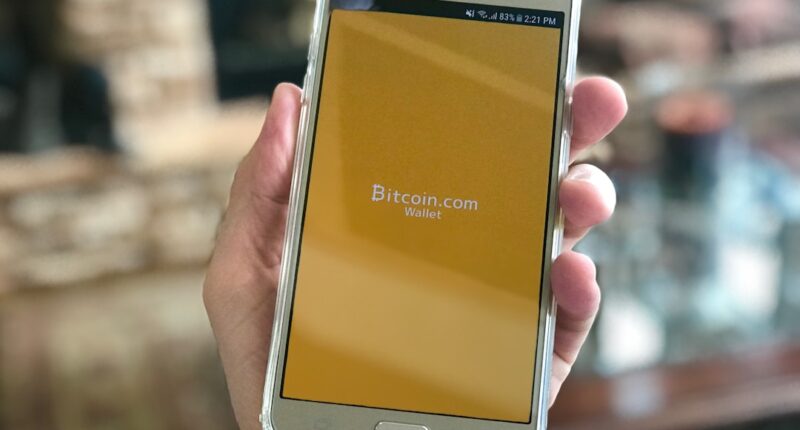NFT marketplaces are digital platforms that facilitate the buying, selling, and trading of Non-Fungible Tokens (NFTs). These tokens represent unique digital assets, including artwork, videos, music, and other forms of digital content. Unlike cryptocurrencies, NFTs are not interchangeable and possess distinct values and characteristics.
These marketplaces utilize blockchain technology to provide a secure environment for digital artists to showcase and monetize their creations. Artists can mint their digital works into NFTs, which can then be traded on the platform. The blockchain records ownership and transaction history, ensuring transparency and authenticity for both buyers and sellers.
The emergence of NFT marketplaces has revolutionized the digital art industry by offering artists new opportunities to reach global audiences and receive fair compensation for their work. This technology has challenged traditional concepts of art ownership and provenance, potentially reshaping the art market’s future. As NFTs gain popularity, the number of marketplaces continues to grow, each offering unique features and benefits to artists and collectors.
These platforms are likely to play an increasingly significant role in the art world, providing innovative ways for creators to produce, distribute, and profit from their digital works.
Key Takeaways
- NFT marketplaces are online platforms where users can buy, sell, and trade digital assets using blockchain technology.
- Top NFT marketplaces for buying and selling digital art include OpenSea, Rarible, Foundation, and SuperRare.
- When choosing the right NFT marketplace for your art, consider factors such as fees, user base, and platform features.
- Tips for selling your digital art on NFT marketplaces include creating high-quality work, promoting your art on social media, and engaging with the community.
- Understanding fees and costs on NFT marketplaces is important for artists, as they can impact the profitability of selling digital art.
- Navigating the legal and copyright aspects of NFT marketplaces involves understanding ownership rights, licensing, and potential legal implications.
- The future of NFT marketplaces and digital art is expected to continue growing, with potential for new technologies and innovations in the space.
Top NFT Marketplaces for Buying and Selling Digital Art
Decentralized Marketplaces
OpenSea is one of the largest and most well-known NFT marketplaces, offering a wide range of digital assets including art, domain names, virtual worlds, and more. It is a decentralized marketplace, meaning that it does not have a central authority or control over the assets listed on its platform. This allows for a greater variety of digital art to be bought and sold, as well as a more open and inclusive environment for artists and collectors.
User-Friendly Platforms
Rarible is another popular NFT marketplace that has gained attention for its user-friendly interface and community-focused approach. It allows artists to create and sell their own NFTs without any coding knowledge, making it accessible to a wide range of creators. Rarible also has its own governance token, RARI, which allows holders to participate in platform decisions and earn rewards.
Curated Experiences
Foundation is a curated NFT marketplace that focuses on supporting emerging digital artists. It operates on an invitation-only basis, with a team of curators selecting artists to join the platform. This curation process helps to maintain a high level of quality and originality among the artworks available on Foundation, making it an attractive platform for collectors looking for unique and innovative pieces. SuperRare is a premium NFT marketplace that is known for its high-quality curation and focus on supporting artists. It has gained a reputation for showcasing some of the most innovative and cutting-edge digital art in the NFT space. SuperRare also offers features such as unlockable content and social interactions, creating a more immersive experience for collectors.
Community-Focused Platforms
KnownOrigin is an NFT marketplace that prides itself on its commitment to supporting artists and giving back to the creative community. It has a strong focus on ethical practices and sustainability, aiming to create a fair and transparent environment for buying and selling digital art. KnownOrigin also donates a portion of its proceeds to charitable causes, furthering its mission to support artists and make a positive impact.
How to Choose the Right NFT Marketplace for Your Art

When choosing an NFT marketplace to sell your digital art, there are several factors to consider in order to find the right fit for your work. One important consideration is the type of art you create and whether it aligns with the focus and aesthetic of the marketplace. Some platforms may cater to specific styles or genres of digital art, so it’s important to research each marketplace to see if your work would be a good fit.
Another factor to consider is the community and audience of each marketplace. Different platforms may attract different types of collectors and buyers, so it’s important to understand the demographics and interests of each community in order to effectively market your art. Additionally, some marketplaces may offer more support and resources for artists, such as educational materials, promotional opportunities, or networking events.
It’s also important to consider the fees and costs associated with each marketplace, as these can vary widely and impact your overall earnings. Some platforms may have higher fees but offer additional features or services, while others may have lower fees but fewer resources for artists. Understanding the fee structure of each marketplace is crucial in making an informed decision about where to sell your art.
Ultimately, the right NFT marketplace for your art will depend on your individual goals, preferences, and values as an artist. By carefully researching and considering these factors, you can find a marketplace that aligns with your artistic vision and provides the support and opportunities you need to succeed.
Tips for Selling Your Digital Art on NFT Marketplaces
1. Build Your Brand
Building a strong brand as a digital artist can help you stand out in a crowded marketplace and attract collectors to your work. This can include creating a cohesive visual identity, developing a unique artistic style, and engaging with your audience through social media and other channels.
By establishing a recognizable brand, you can create a loyal following of collectors who are interested in your art. 2. Tell Your Story
Sharing the story behind your art can help create a deeper connection with potential buyers and collectors.
Whether it’s the inspiration behind a particular piece, your creative process, or your personal journey as an artist, storytelling can add value to your work and make it more meaningful to buyers. Consider incorporating storytelling into your marketing materials, social media posts, or artist statements to engage with your audience on a deeper level. 3.
Engage with the Community
Engaging with the NFT community can help you build relationships with other artists, collectors, and industry professionals. This can include participating in online forums, attending virtual events and conferences, or collaborating with other artists on projects. By actively participating in the community, you can gain valuable insights, support, and opportunities for exposure for your art.
4. Offer Value-Added Content
Consider offering value-added content along with your NFTs to make them more attractive to buyers. This could include exclusive access to behind-the-scenes content, limited edition physical merchandise, or special experiences related to your art.
By providing additional value beyond the digital artwork itself, you can create a more compelling offer for collectors. 5. Be Transparent and Authentic
Transparency and authenticity are key factors in building trust with potential buyers.
Be honest about your artistic process, the scarcity of your work, and any other relevant details about your NFTs. Authenticity can help you build credibility as an artist and create a positive reputation within the NFT community. By implementing these tips, you can enhance your presence as a digital artist on NFT marketplaces and increase your chances of selling your work successfully.
Understanding Fees and Costs on NFT Marketplaces
When selling digital art on NFT marketplaces, it’s important to understand the various fees and costs associated with each platform in order to make informed decisions about where to list your work. 1. Minting Fees
Minting fees are charged by NFT marketplaces when artists create new NFTs from their digital artwork.
These fees can vary widely depending on the platform, ranging from a flat rate per minted NFT to a percentage of the final sale price. It’s important to consider minting fees when choosing a marketplace, as they can impact your overall earnings from selling your art. 2.
Transaction Fees
Transaction fees are charged when an NFT is bought or sold on a marketplace. These fees are typically calculated as a percentage of the final sale price and are split between the platform and the creators. It’s important to understand how transaction fees are structured on each marketplace in order to accurately calculate your potential earnings from selling your art.
3. Gas Fees
Gas fees are associated with blockchain transactions and are paid in cryptocurrency to compensate miners for validating and processing transactions. These fees can fluctuate based on network activity and can impact the cost of buying or selling NFTs on certain marketplaces.
It’s important to consider gas fees when pricing your NFTs and when choosing where to list your art. 4. Platform Fees
Some NFT marketplaces charge additional platform fees for features such as premium placement, promotional opportunities, or access to exclusive services.
These fees can vary widely between platforms and should be taken into account when evaluating the overall costs of selling your art on different marketplaces. By understanding these fees and costs associated with NFT marketplaces, you can make informed decisions about where to list your art in order to maximize your earnings and reach your target audience.
Navigating the Legal and Copyright Aspects of NFT Marketplaces

Understanding Copyright Ownership
Digital artists must understand their copyright ownership rights when minting and selling NFTs. In many jurisdictions, creators automatically hold copyright over their original works as soon as they are created. However, it’s essential to review the terms of service of each marketplace to understand how copyright ownership is addressed when minting NFTs.
Licensing Agreements and Intellectual Property Rights
Some NFT marketplaces require artists to grant certain licenses or rights to buyers when selling their NFTs. It’s crucial to carefully review these licensing agreements to understand how your work may be used by buyers after purchase. Artists may also choose to offer different types of licenses for their NFTs, such as personal use only or commercial use, depending on their preferences.
Protecting Against Intellectual Property Infringement
Digital artists should be aware of potential intellectual property infringement issues when creating and selling NFTs. This includes ensuring that their work does not infringe upon the rights of others, such as using copyrighted material without permission, as well as protecting their own work from infringement by others.
Seeking Legal Advice and Compliance
It’s essential for digital artists to seek legal advice when navigating the legal aspects of NFT marketplaces to ensure compliance with relevant laws and regulations. This may include consulting with an attorney who specializes in intellectual property law or digital art to address specific legal concerns related to minting and selling NFTs. By understanding these legal considerations and seeking appropriate legal advice when necessary, digital artists can protect their rights and navigate the legal aspects of NFT marketplaces with confidence.
The Future of NFT Marketplaces and Digital Art
The future of NFT marketplaces holds great promise for digital artists as blockchain technology continues to evolve and new opportunities emerge for creators in the digital art space. 1. Increased Accessibility
As blockchain technology becomes more accessible and user-friendly, we can expect to see an increase in the number of digital artists participating in NFT marketplaces.
This will create a more diverse range of digital art available for collectors while providing new opportunities for emerging artists to showcase their work on a global scale. 2. Innovation in Digital Art
NFT marketplaces have already sparked innovation in digital art by providing new ways for artists to create, distribute, and monetize their work.
As technology continues to advance, we can expect to see even more experimentation with new mediums, formats, and interactive experiences within the realm of digital art. 3. Integration with Physical Art
The integration of NFTs with physical art presents an exciting opportunity for collectors and artists alike.
By tokenizing physical artwork as NFTs, artists can create new revenue streams while providing collectors with unique opportunities to own and trade both digital and physical representations of their favorite pieces. 4. Evolving Standards
As the NFT space matures, we can expect to see evolving standards around issues such as copyright ownership, licensing agreements, and intellectual property rights within NFT marketplaces.
This will help provide clarity and protection for both artists and collectors while fostering trust within the ecosystem. 5. Mainstream Adoption
As awareness of NFTs continues to grow among mainstream audiences, we can expect to see increased adoption of digital art collecting through NFT marketplaces.
This will create new opportunities for artists to reach wider audiences while challenging traditional notions of ownership within the art world. In conclusion, NFT marketplaces have opened up new possibilities for digital artists by providing innovative ways to create, sell, and collect digital art using blockchain technology. By understanding the landscape of NFT marketplaces, navigating legal considerations, and embracing future opportunities, digital artists can position themselves for success in this rapidly evolving space.
If you’re interested in learning more about the world of NFTs and blockchain technology, you should check out the article “Hello World: A Beginner’s Guide to NFTs” on eth-news.com. This article provides a comprehensive overview of NFTs, including how they work, their potential impact on the art world, and how to get started with buying and selling digital art. It’s a great resource for anyone looking to dive deeper into the NFT marketplace. (source)
FAQs
What is an NFT marketplace?
An NFT marketplace is a platform where users can buy, sell, and trade non-fungible tokens (NFTs), which are unique digital assets that represent ownership or proof of authenticity of a specific item or piece of digital art.
How do NFT marketplaces work?
NFT marketplaces operate on blockchain technology, allowing users to securely buy, sell, and trade NFTs using cryptocurrency. Each NFT has a unique digital signature that verifies its authenticity and ownership.
Where can I buy and sell digital art NFTs?
There are several popular NFT marketplaces where you can buy and sell digital art NFTs, including OpenSea, Rarible, Foundation, and SuperRare. Each marketplace has its own unique features and user base.
What are the fees associated with NFT marketplaces?
NFT marketplaces typically charge fees for listing, selling, and transferring NFTs. These fees vary by platform and can include gas fees for blockchain transactions and platform commission fees.
Are NFT marketplaces secure?
NFT marketplaces use blockchain technology to provide secure and transparent transactions. However, it’s important for users to research and choose reputable marketplaces with strong security measures in place.
Can I sell my own digital art on NFT marketplaces?
Yes, many NFT marketplaces allow artists to mint and list their own digital art as NFTs for sale. This provides artists with a new way to monetize their work and connect with collectors.





